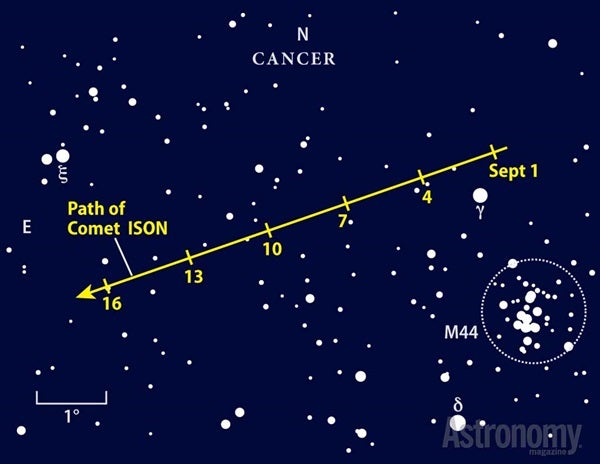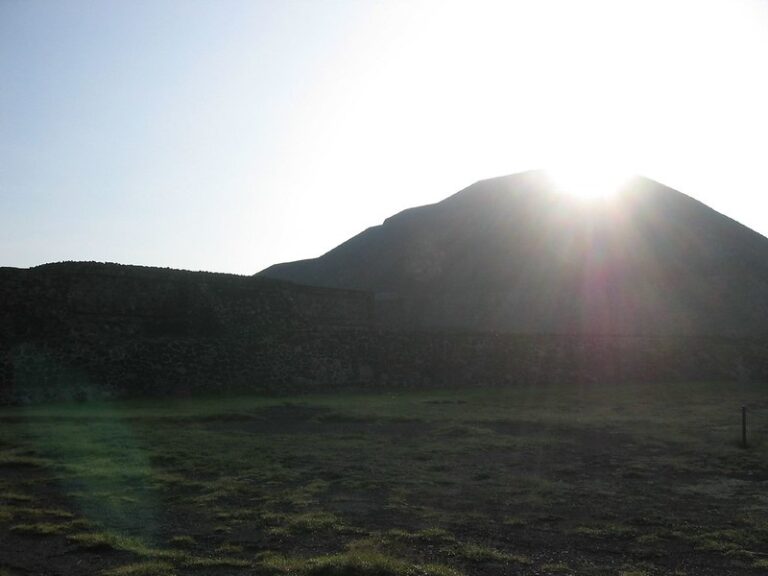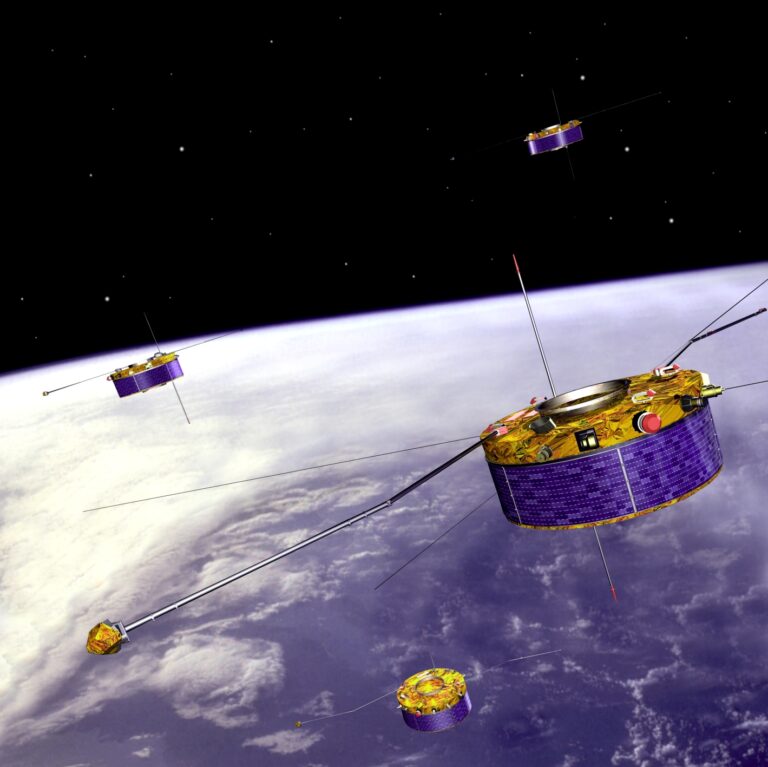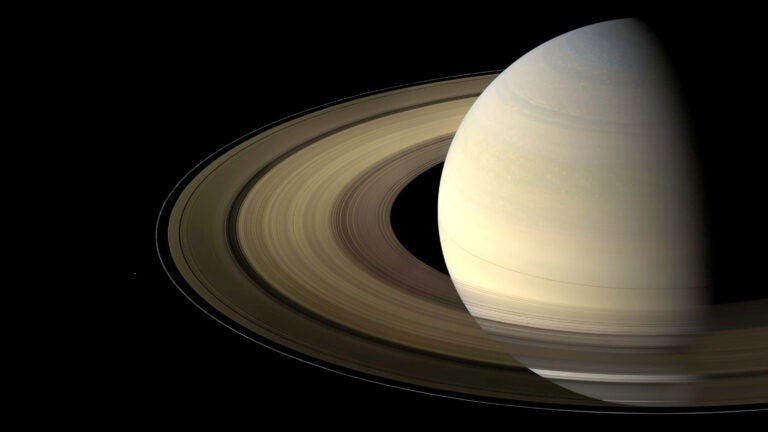Because ISON is approaching Earth from the morning side, potential comet-watchers will need to view it about two hours before sunrise. ISON lies low in the east before dawn, just north of the hazy glow of the Beehive star cluster (M44), which lies in the constellation Cancer the Crab. That nearby bright orange “star” is actually the planet Mars.
Astronomy Contributing Editor Raymond Shubinski advises U.S. observers: “Take advantage of the Labor Day weekend to bag ISON because light from the waning gibbous Moon will make it a lot tougher to see after the middle of the month.”
Use the accompanying finder chart to zero in on the comet’s position. Your telescope may not show anything at first, so pump up the power to 150x or so. At this early stage, ISON will be quite small and likely glowing between 10th and 12th magnitude, or roughly 100 times fainter than the unaided human eye can see. We’re viewing ISON at an angle, so it ought to appear slightly out of round, with a sharper edge in the direction of the Sun and a more diffuse opposite side where a nascent tail is forming.
Follow Comet ISON’s travels at www.Astronomy.com/ISON, and pick up the September issue of Astronomy for even more coverage of ISON’s voyage to the inner solar system.










